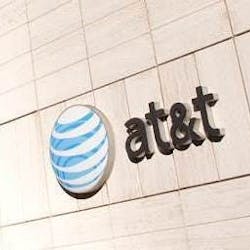When will service providers finally be through their inventory correction phase?
While broadband access equipment sales will decline by 1 percent from 2023, with the first half of 2024 seeing continued weakness, Dell’Oro expects it to be followed by an improved spending environment in the year's second half.
The research firm attributes the growth cycle in 2025 to a host of emerging trends, including ongoing subsidization efforts, the shift from copper to fiber, and the rollout of cable-distributed access architectures.
“Although the inventory corrections seen in 2023 will continue through the first half of 2024, the second half of the year is expected to be the turning point towards renewed growth,” said Jeff Heynen, Vice President at Dell’Oro Group.
Heynen added, “Service providers still have the same goals of increasing their fiber footprint, increasing the bandwidth they can offer their customers, and improving the reliability of their broadband services through the distribution of intelligence closer to subscribers.”
PON, CCAP revenue growth ahead
Broadband providers will drive growth on two fronts: PON for fiber-to-the-home (FTTH) and DOCSIS 4.0.
Driven by XGS-PON deployments in various regions, including North America, EMEA, and CALA and early 50 Gbps deployments in China, Dell’Oro expects PON equipment revenue to grow from $10.8 billion in 2023 to $11.8 billion in 2028.
Finally, revenue for Wi-Fi 7 residential routers and broadband CPE with WLAN will reach $9.3 billion by 2028 as the technology is rapidly adopted by consumers and service providers alike.
AT&T, Verizon and Lumen saw gains on the fiber broadband front during the fourth quarter.
AT&T is on track to pass over 30 million locations with fiber by the end of 2025. Having gained 1.1 million AT&T Fiber net adds in 2023, Stankey said AT&T generated over 1 million AT&T Fiber net adds annually for six straight years.
Verizon had 55,000 net adds for the fourth quarter, down 4,000 year-over-year, while Lumen added 20,000 Quantum Fiber customers, ending the fourth quarter with 916,000.
Likewise, revenue for Cable Distributed Access Equipment (Virtual CCAP, Remote PHY Devices, Remote MACPHY Devices, and Remote OLTs) is expected to reach $1.3 billion by 2028 as cable operators continue their DOCSIS 4.0 and early fiber deployments.
Comcast and Charter both have been conducting migrations to DOCSIS 4.0 and fiber.
During its fourth-quarter earnings call, Comcast said it was pursuing several initiatives to enhance network capacity and offer multi-gigabit symmetrical speeds that can be done without forklift upgrades. These initiatives include the deployment of mid-splits and leveraging DOCSIS 4.0, which, along with its fiber network, it says will enable the delivery of multi-gigabit symmetrical speeds across its footprint.
In October, Comcast debuted its DOCSIS 4.0-based X-Class service in Colorado Springs. The X-Class Internet portfolio includes speed tiers of 300 Mbps, 500 Mbps, and 1 Gbps up to 2 Gbps. Comcast has also rolled out the DOCSIS 4.0 service in the Atlanta and Philadelphia metro areas.
While it lost 61,000 customers in the fourth quarter, Charter has expanded its rural broadband reach. Charter activated 105,000 rural passings in the fourth quarter, ending the year with 420,000, for a total growth of 295,000 in 2023.
Broadband wireless’ influence
Another factor in broadband growth is the influence of fixed wireless access (FWA).
The research firm forecasts that revenue for Fixed Wireless CPE is expected to reach $2.5 billion by 2028, led by shipments of 5G sub-6GHz and a growing number of 5G millimeter wave units.
AT&T, Verizon and T-Mobile all reported gains on the FWA front during the fourth quarter.
Verizon reported that fixed wireless access experienced steady growth and was responsible for 375,000 net broadband ads in the fourth quarter. AT&T Internet Air net adds 67,000, more than offsetting other non-fiber losses.
However, T Mobile led the trio with 541,000 High-Speed Internet net customer additions during the fourth quarter. It will be 2.1 million in 2023.
“Fixed Wireless Access has proven that it can provide connectivity both in rural and underserved markets while competing head-to-head with fixed broadband technologies in urban and suburban markets,” said Heynen.
Heynen added that FWA also sees utility in the business segment that wants its dedicated wireless infrastructure. “Beyond residential connectivity, enterprises rely more heavily on FWA-enabled routers and gateways to connect branch offices, vehicles, and kiosks as part of their private wireless initiatives.”
For more news, products, and technical profiles in broadband cable and telecommunications technology, subscribe to BTR's newsletter and follow us on LinkedIn, Twitter, and Facebook.






